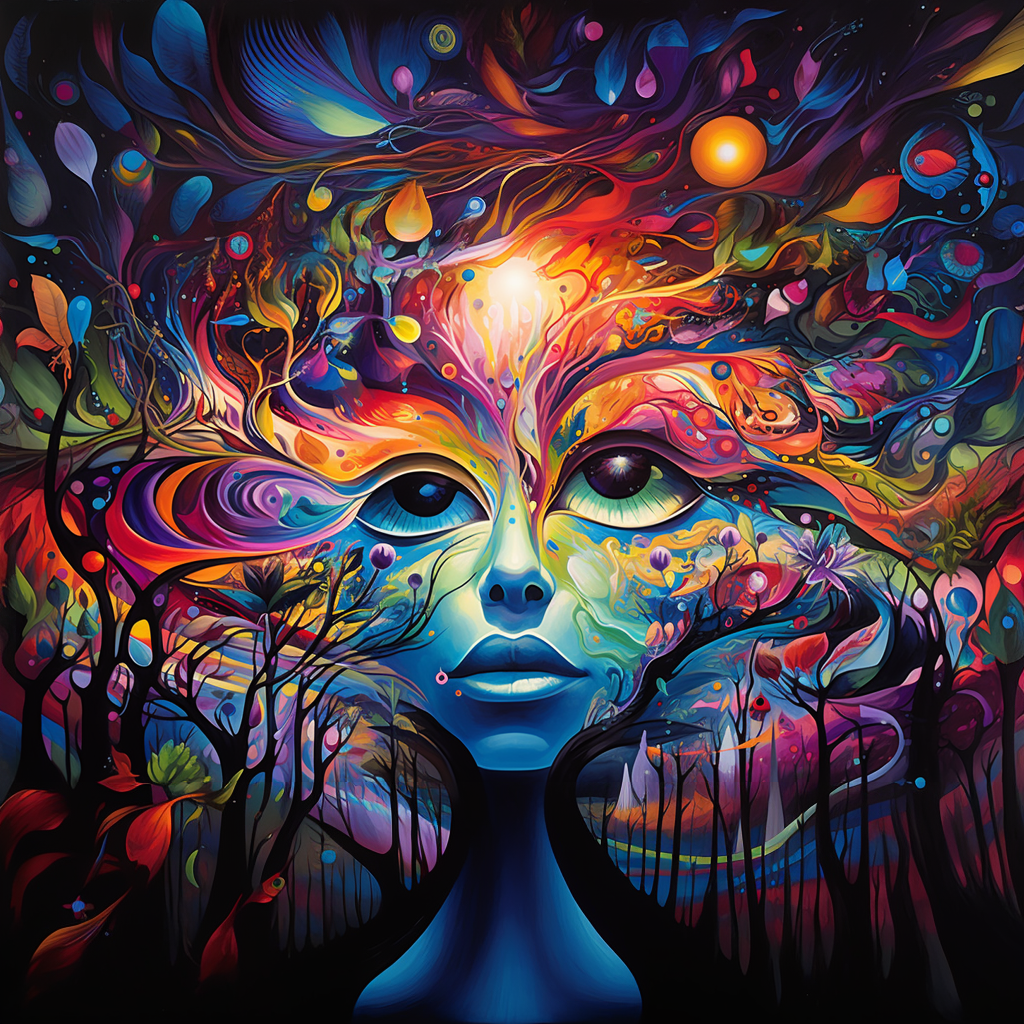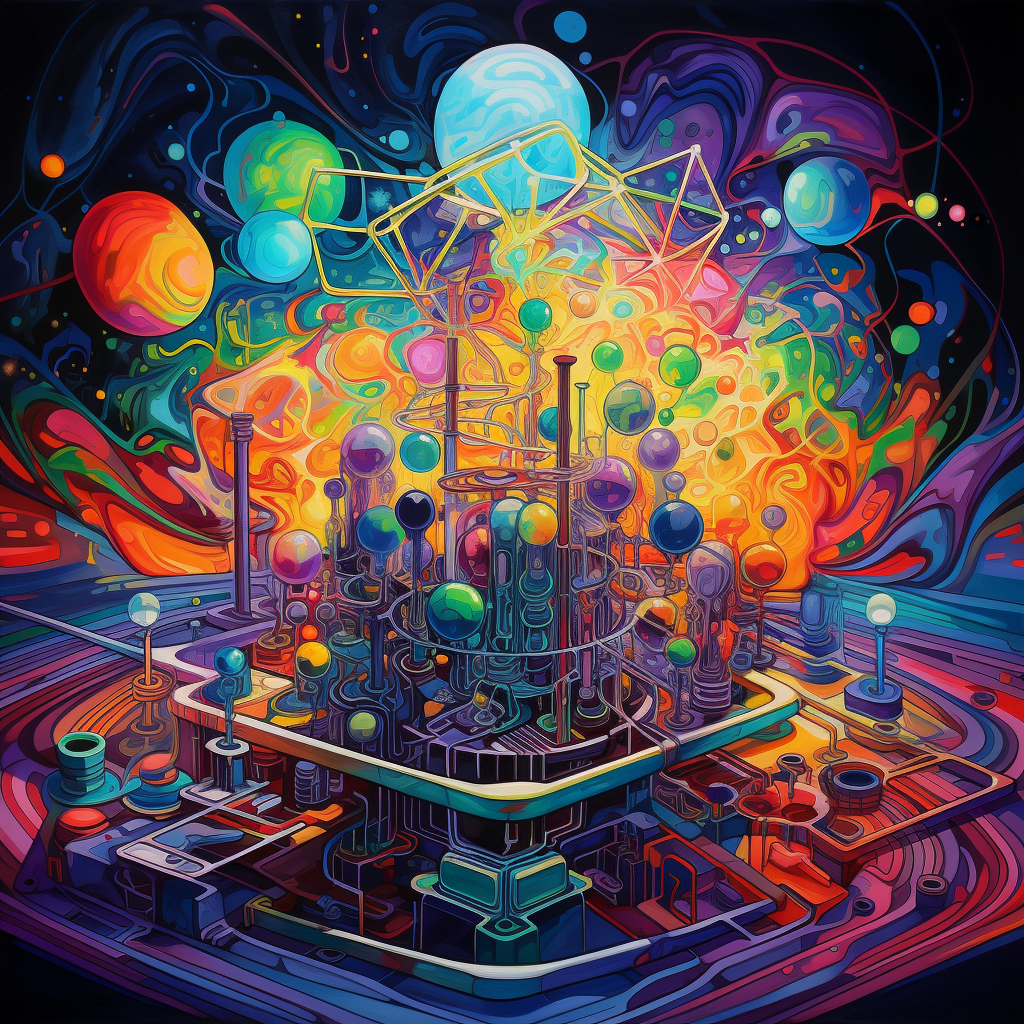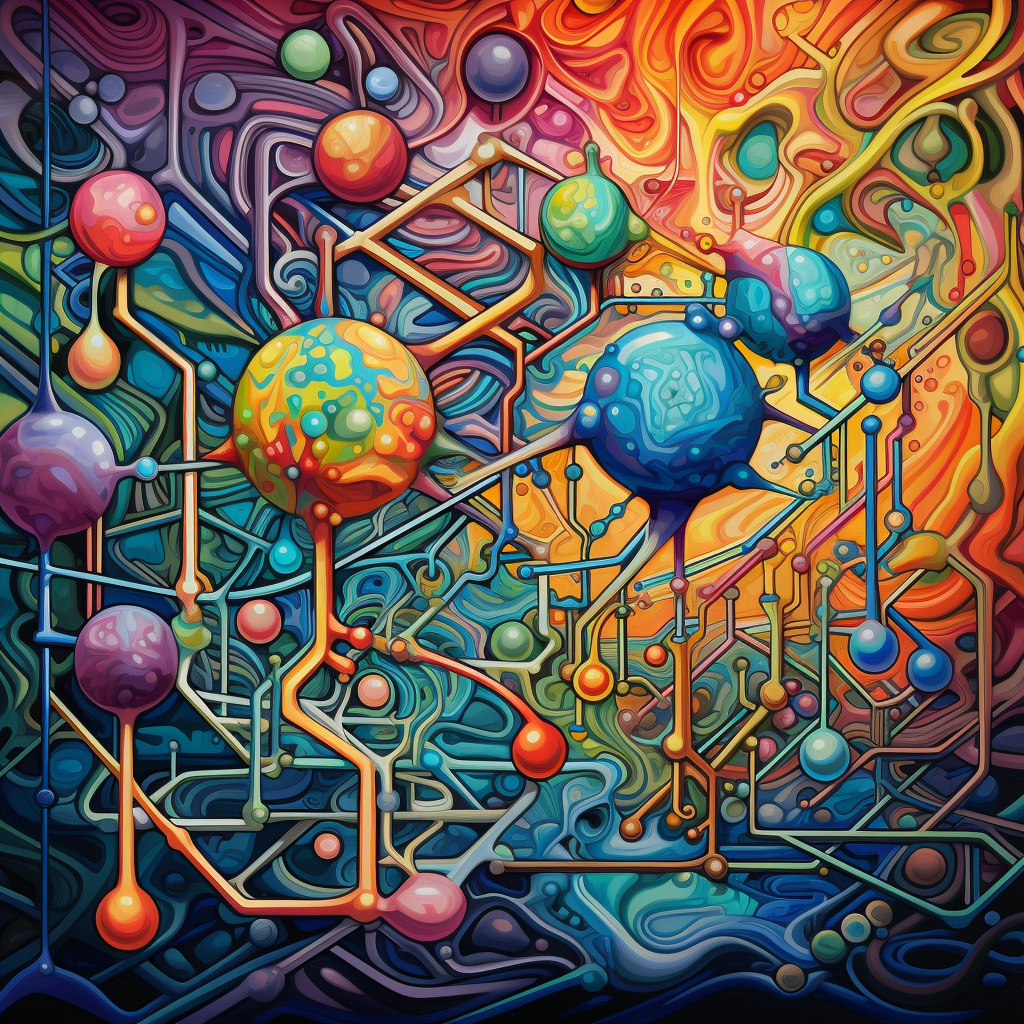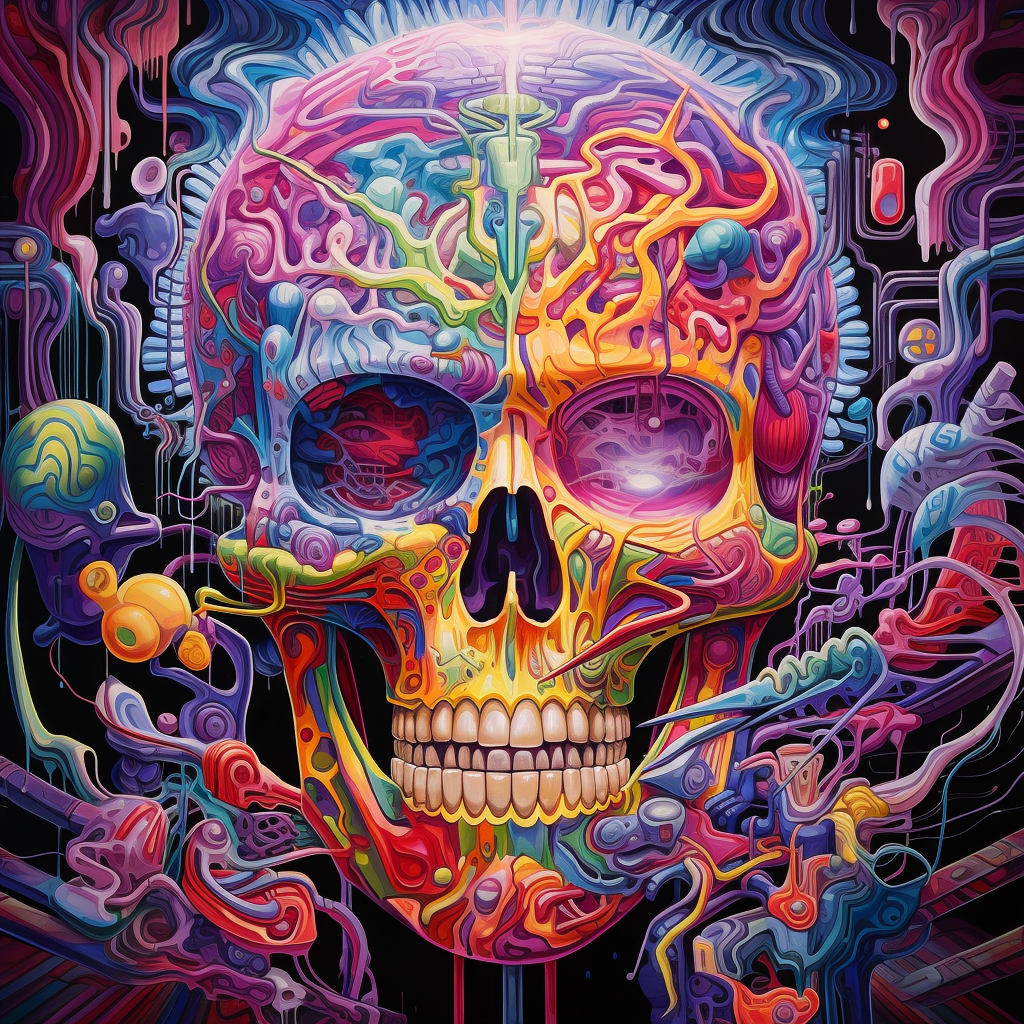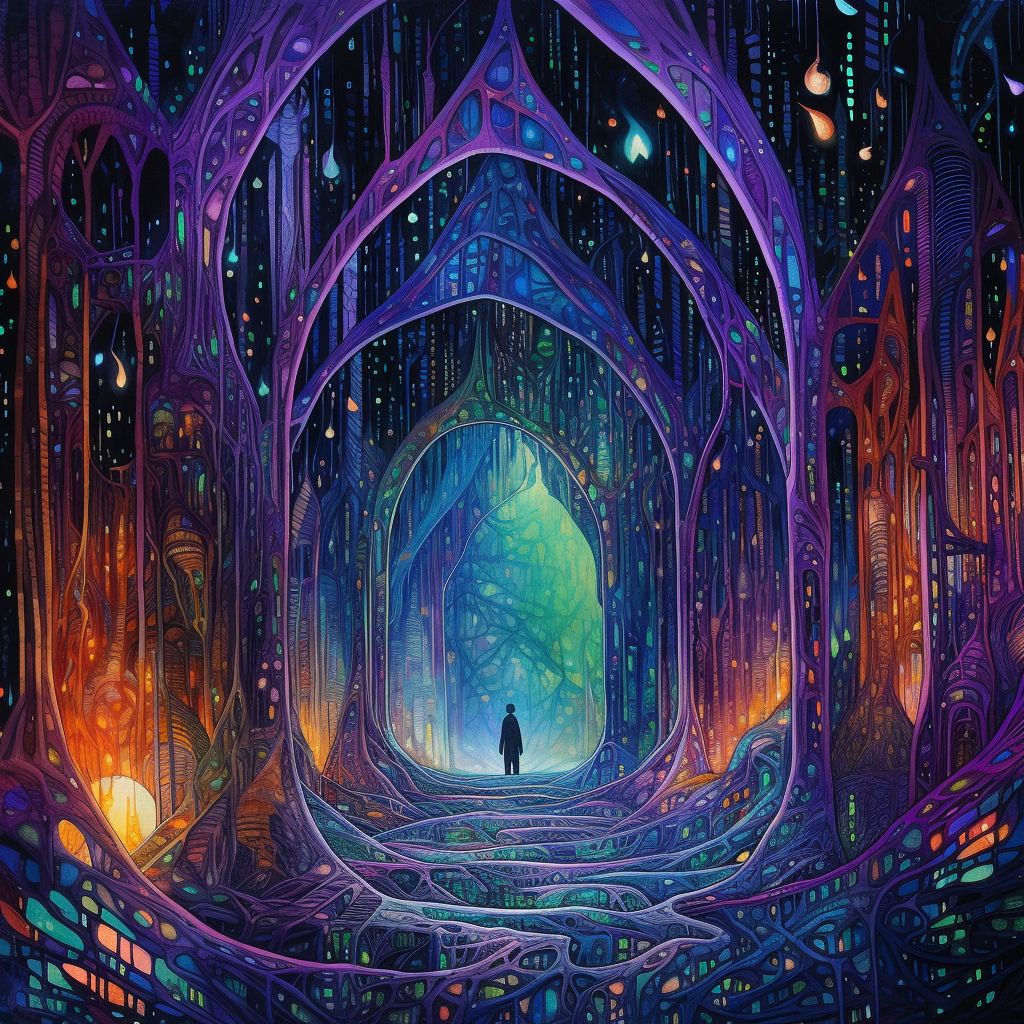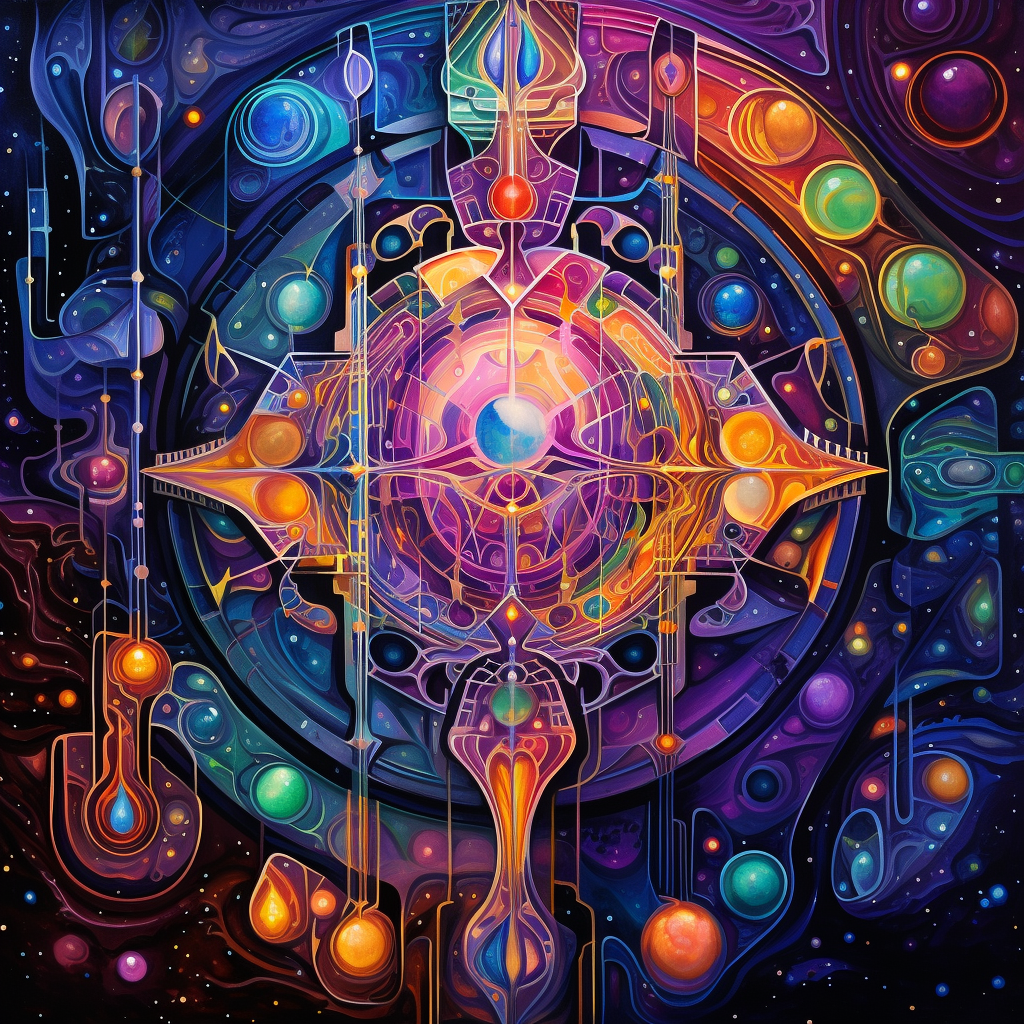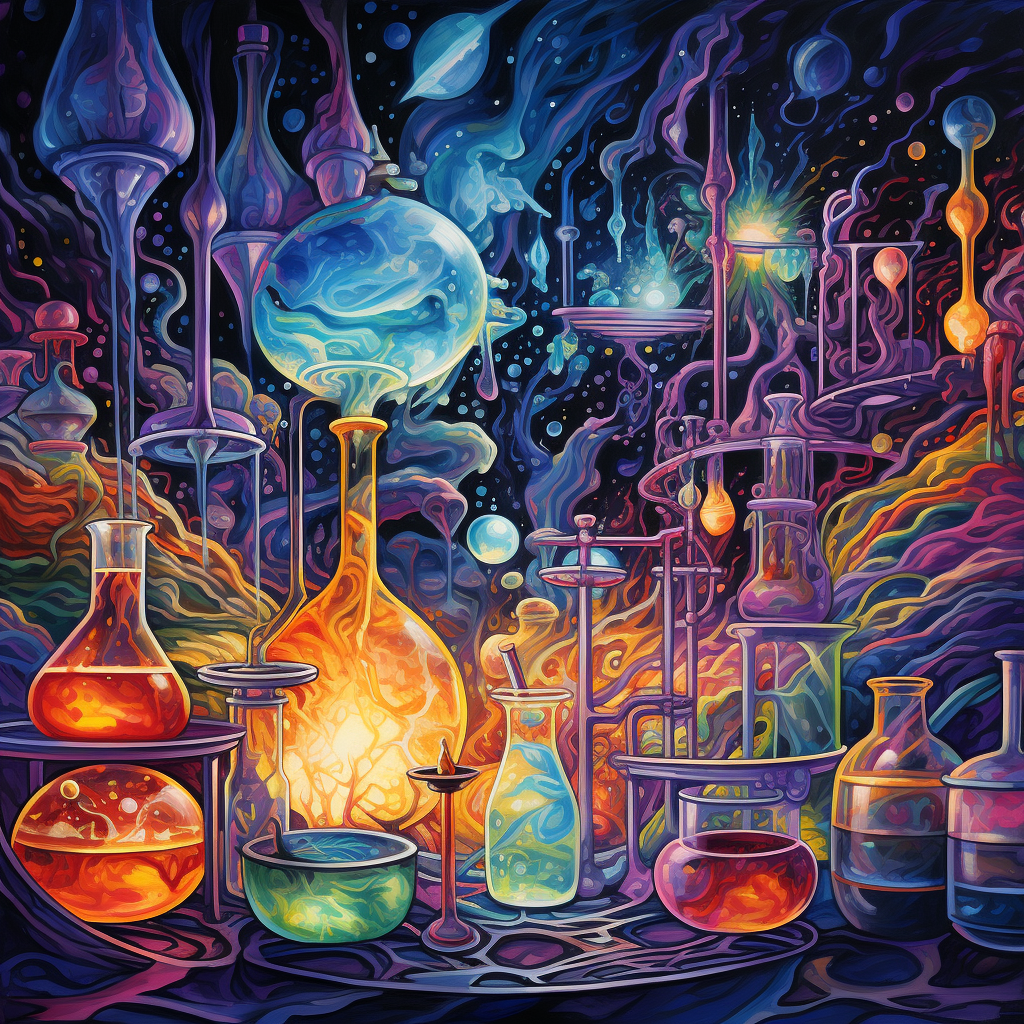We're in Beta 🙃
DMT & 5-MeO-DMT
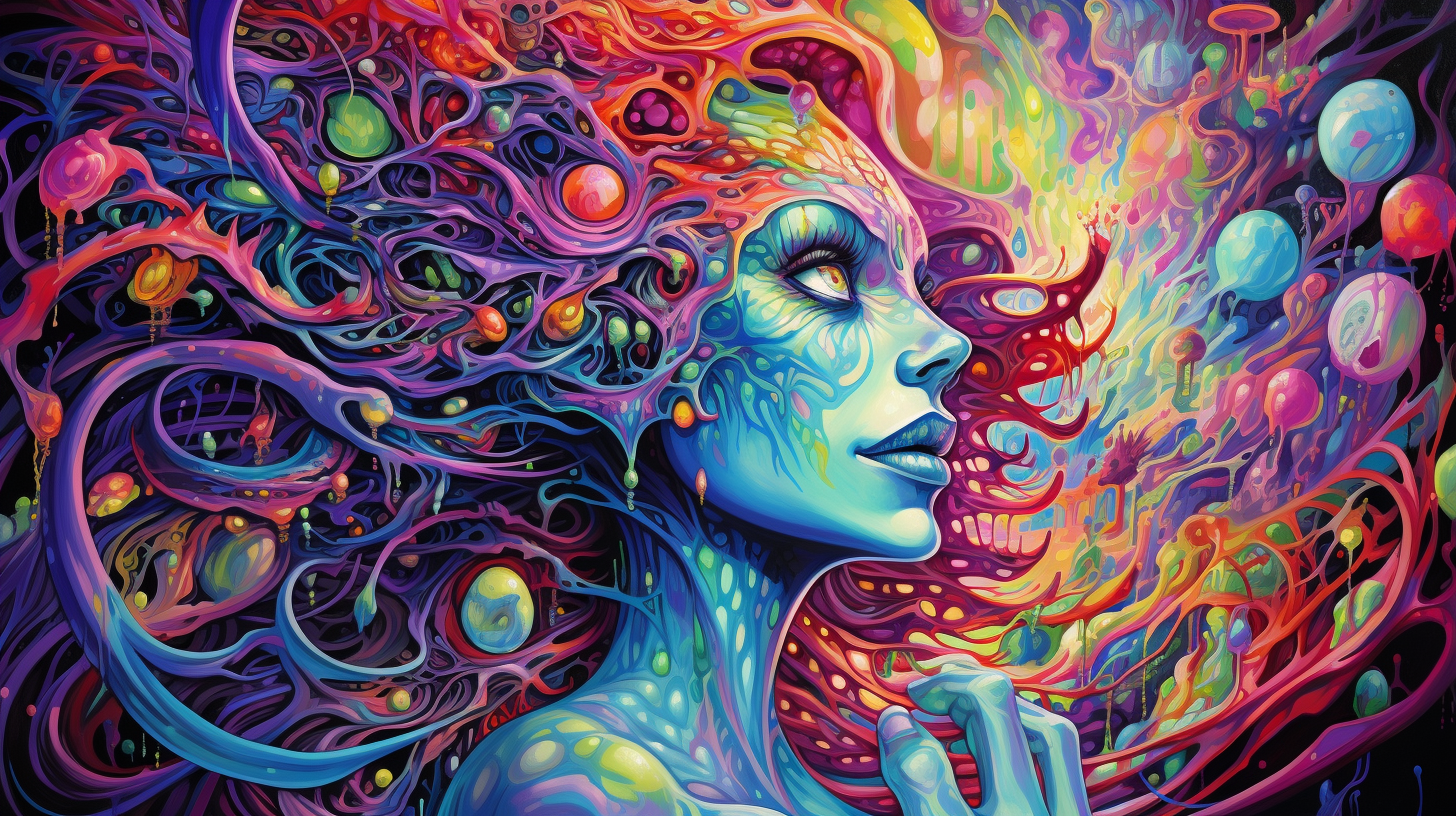
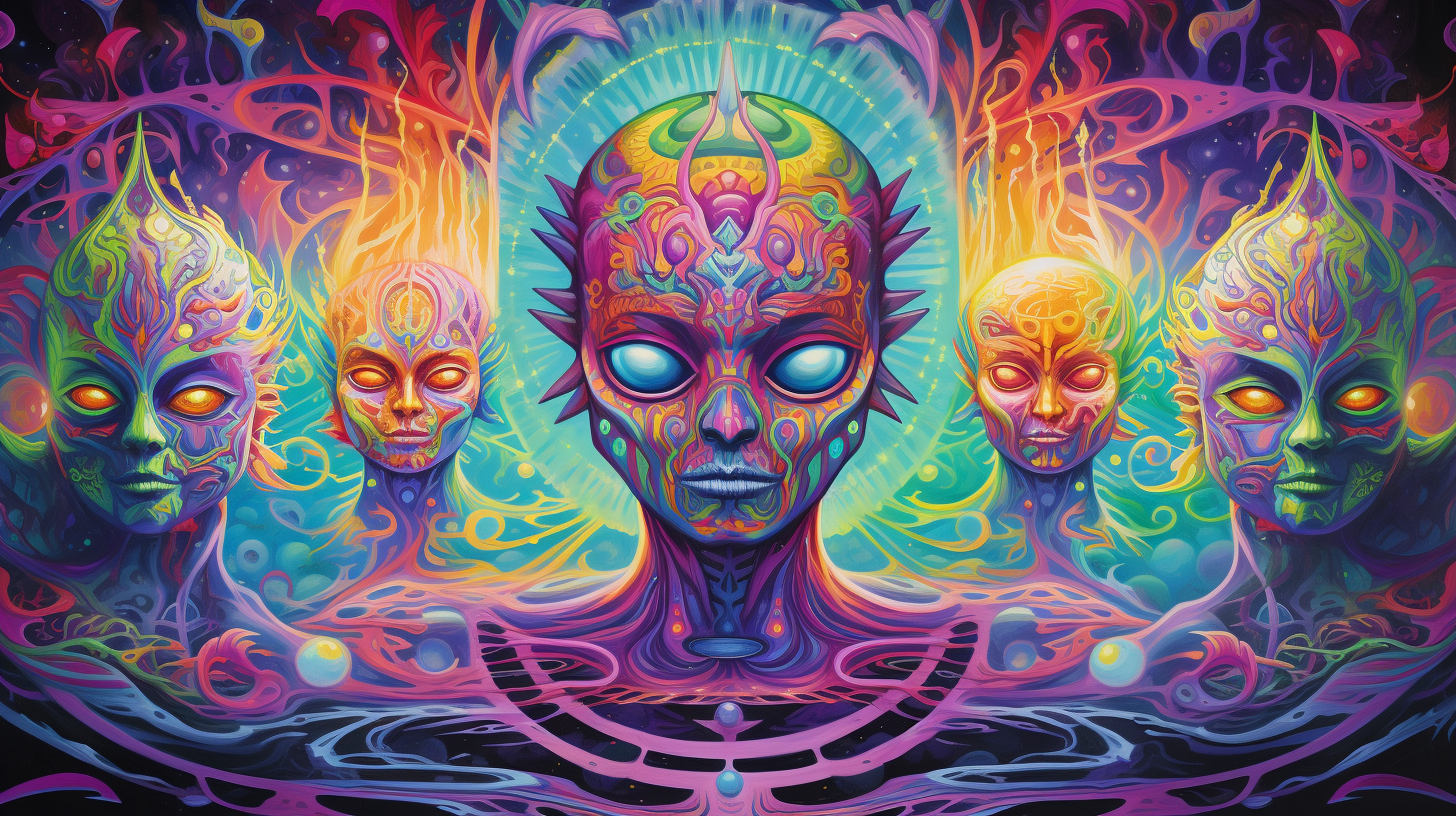
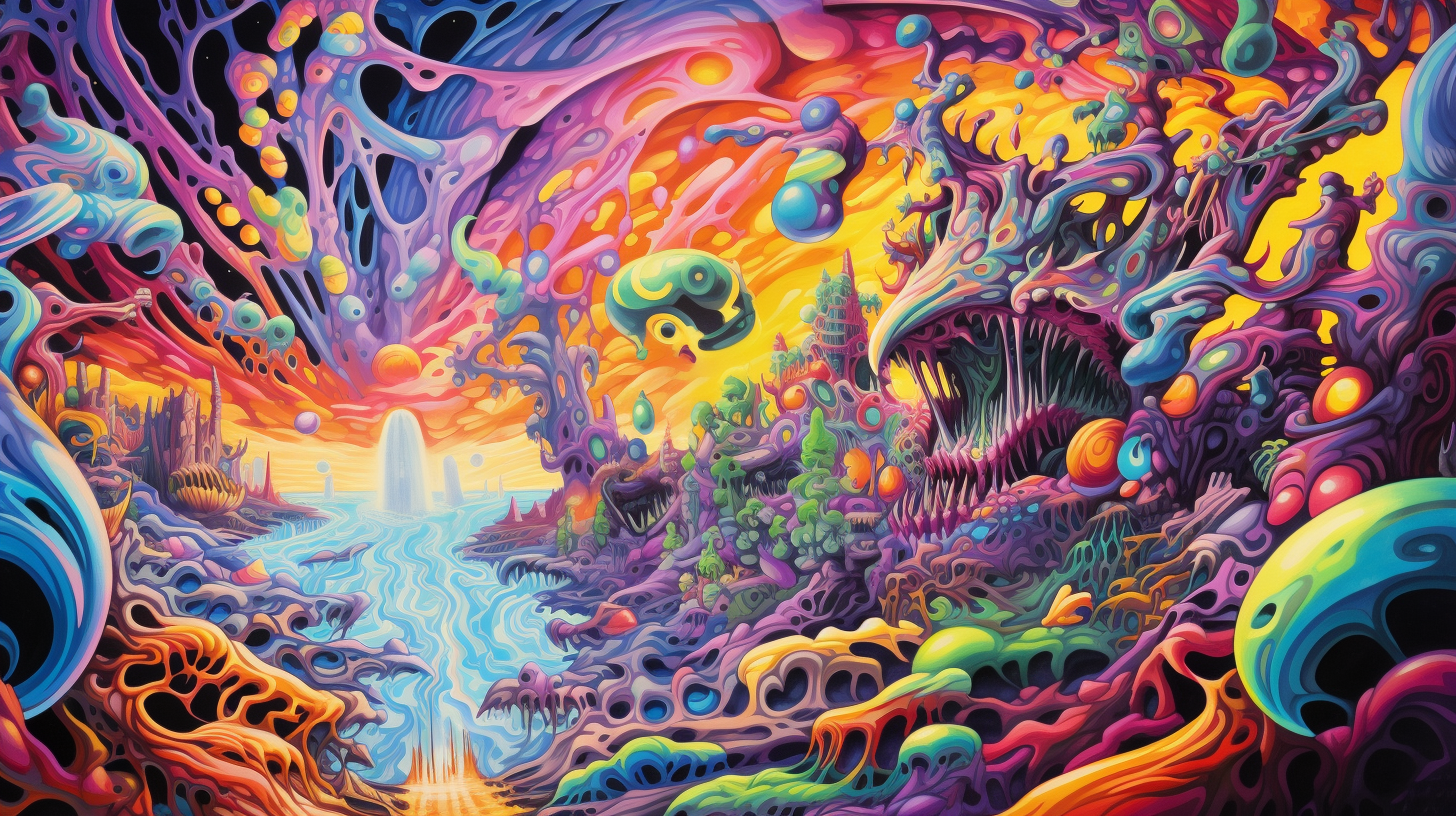
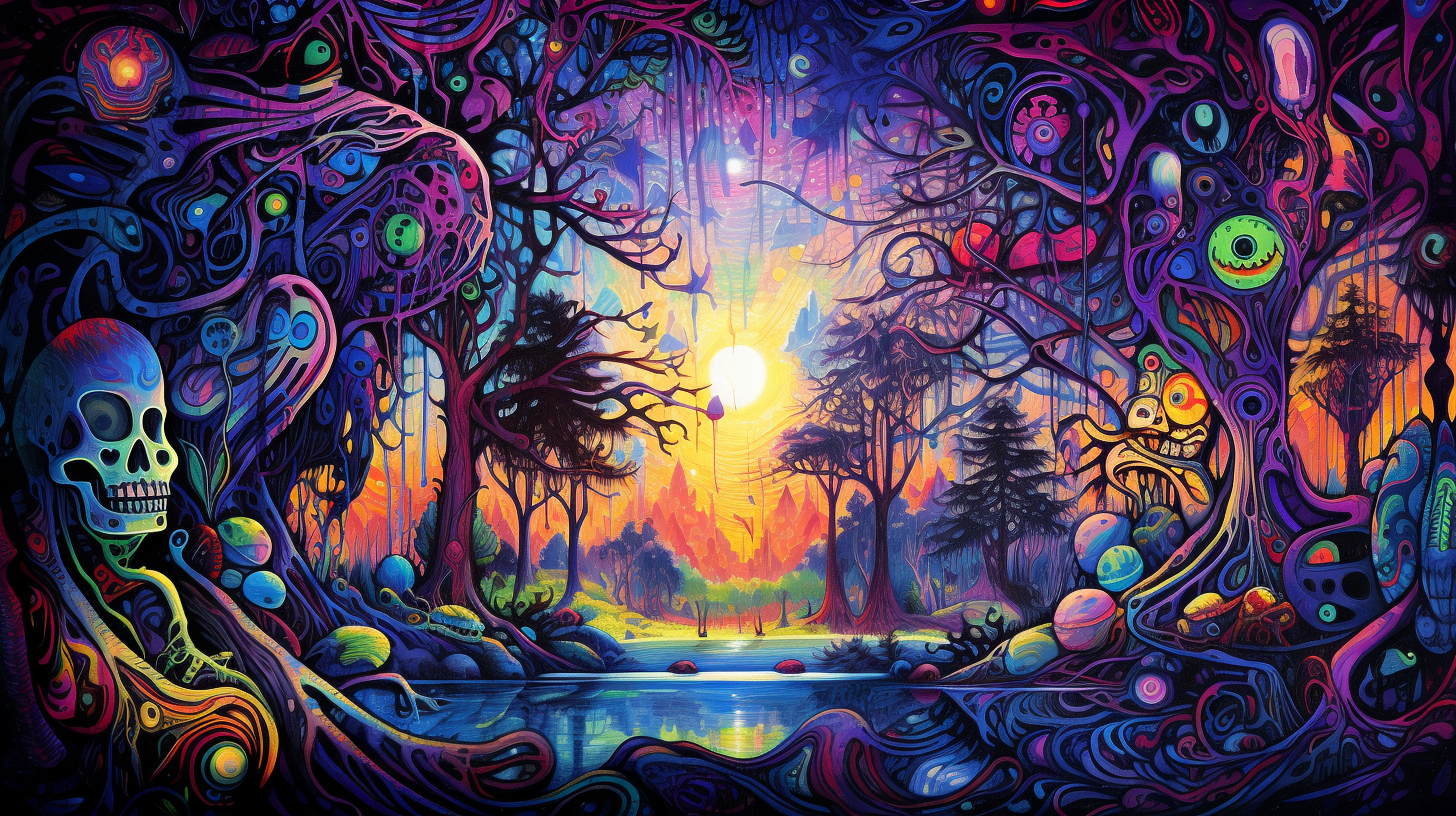
DMT is one of the most potent psychedelic substances known, with effects that typically manifest rapidly and briefly, lasting approximately 15 to 30 minutes when administered through methods such as smoking or vaporization.
It is a key component in the potent Amazonian brew, Ayahuasca, which has been used for millennia in indigenous rituals and shamanic practices. Today this powerful substance is being explored in scientific and cultural contexts for its effects and potential applications.
DMT is federally classified as a Schedule I controlled substance in the United States. This means that it is currently illegal to make, buy, possess or distribute the drug. Some cities have recently begun to decriminalize it, but it is still illegal under state and federal law.
The Chemical Makeup of DMT
 DMT belongs to the tryptamine class of compounds. Its chemical structure consists of two key components: a tryptamine backbone and two methyl (CH3) groups attached to the amine nitrogen atom, hence the name "dimethyl" tryptamine.
DMT belongs to the tryptamine class of compounds. Its chemical structure consists of two key components: a tryptamine backbone and two methyl (CH3) groups attached to the amine nitrogen atom, hence the name "dimethyl" tryptamine.
This structure is characterized by a bicyclic indole ring system, which forms the core of numerous naturally occurring compounds, including serotonin, a neurotransmitter with essential roles in regulating mood and cognition.
Its chemical formula is C12H16N2, representing its 12 carbon (C), 16 hydrogen (H), and 2 nitrogen (N) atoms. This molecular structure allows DMT to interact with various receptors in the brain, particularly serotonin receptors, where it exerts its profound effects on perception, cognition, and consciousness.
In nature, this psychedelic substance can be found in trace amounts in various plants, such as Psychotria viridis and Banisteriopsis caapi, commonly used in traditional indigenous brews like ayahuasca.
Its presence in these plants has led to centuries-old practices involving the consumption of DMT-containing concoctions for ceremonial and shamanic purposes.
The Chemical Makeup of 5-MEO-DMT
 5-MeO-DMT (also referred to as 5-MeO), or 5-methoxy-N,N-dimethyltryptamine, is another member of the tryptamine class of compounds, similar to its close relative, DMT. Its chemical structure also contains the foundational tryptamine backbone, but it is differentiated by an additional methoxy (OCH3) group at the fifth carbon of the indole ring.
5-MeO-DMT (also referred to as 5-MeO), or 5-methoxy-N,N-dimethyltryptamine, is another member of the tryptamine class of compounds, similar to its close relative, DMT. Its chemical structure also contains the foundational tryptamine backbone, but it is differentiated by an additional methoxy (OCH3) group at the fifth carbon of the indole ring.
Like DMT, 5-MeO's structure features the hallmark bicyclic indole ring system, which connects it chemically to essential biological compounds like serotonin. This neurotransmitter plays a pivotal role in mood regulation, cognition, and overall brain function.
The chemical formula for 5-MeO is C13H18N2O, denoting its 13 carbon (C), 18 hydrogen (H), 2 nitrogen (N), and 1 oxygen (O) atoms. Due to its molecular makeup, 5-MeO also interfaces with the serotonin receptors in the brain, albeit producing distinct and often more potent psychoactive effects compared to DMT.
In the natural world, 5-MeO is found in various sources, with one of the most notable being the secretion of the Bufo alvarius toad. When dried, this secretion can be vaporized and inhaled, providing an intense, often transformative experience. Additionally, some plants contain 5-MeO, further illustrating nature's diverse chemical repertoire and the intricate relationship humans have with these compounds throughout history.
How DMT Affects Your Brain
To understand how DMT produces its unique effects, it's essential to delve into its pharmacological actions:
-
Serotonin Receptor Agonism: DMT primarily acts as a potent agonist, or activator, of serotonin receptors in the brain, particularly the 5-HT2A receptor subtype. This interaction triggers a cascade of neural responses, leading to alterations in mood, perception, and cognition.
-
Rapid Onset: DMT is known for its swift onset of action, often within seconds to minutes after administration. This rapid onset is attributed to its ability to cross the blood-brain barrier efficiently and bind to serotonin receptors.
-
Intense Hallucinations: The activation of serotonin receptors results in vivid and intense visual and auditory hallucinations. In contrast, 5-MeO often induces more expansive and less visually detailed experiences, sometimes described as oceanic or merging with the universe. Users commonly report entering an altered state of consciousness characterized by surreal, yet very real experiences and profound insights.
-
Minimal Physical Effects: Unlike some other psychedelics, DMT is often associated with minimal physiological effects such as changes in heart rate or blood pressure. However, it can induce intense emotional and psychological experiences.
-
Safety Profile: DMT is generally considered to have a relatively low toxicity profile, and there are few reported cases of overdose.
What's the Difference Between the DMT and 5-MeO-DMT Experiences?
While they share a common psychedelic ancestry, these substances offer distinct journeys to those brave enough to explore their cosmic landscapes.The DMT Experience
Often referred to as "breaking through," this experience is a swift but profoundly immersive exploration of altered consciousness, typically lasting only minutes but frequently described as feeling much longer.
It is marked by intense visualizations, a sensation of entering another realm or dimension, and transformative emotional and philosophical insights. Unlike the prolonged, ritualistic immersion of Ayahuasca, DMT offers a rapid, condensed, and intense voyage into the psychedelic realm.
This experience, though brief, is deeply personal and can vary from one individual to another, influenced by set, setting, dosage, and personal psyche. Despite the variability, several themes frequently emerge from user reports and academic explorations:
Sensory and Perceptual Overload: Immediately upon ingestion, users often report a rapid onslaught of vivid and intricate visual patterns. Geometric shapes, fractal patterns, and tunnels of light are common. This visual symphony is often accompanied by unique auditory sensations, like a rising, buzzing or humming sound.
Encounters with Entities: A significant portion of individuals describe interactions with seemingly autonomous entities, often characterized as elves, spirits, or beings of light. These entities can be perceived as guides, teachers, or indifferent spectators.
Ego Dissolution and Cosmic Unity: Like Ayahuasca, DMT can induce feelings of ego dissolution. However, the rapidity of its onset can make this experience feel like a sudden "blast-off" or catapult into a vast, interconnected cosmos.
Time Perception Shift: Although these trips are short-lived, users often feel they've experienced events spanning hours, days, or even lifetimes.
The 5-MeO-DMT Experience
Often referred to as the "God molecule," 5-MeO offers a different journey from its counterpart. Sourced primarily from the secretions of the Bufo alvarius toad, the experience it induces is often described as more unifying and less visually intense.
- Oceanic Boundlessness: Many users report a sensation of merging entirely with an infinite expanse, often described as becoming one with the universe or experiencing an overwhelming sense of unity and interconnectedness.
- Reduced Visual Hallucinations: Unlike with DMT, 5-MeO experiences are often less about vivid visuals and more about profound emotional and existential revelations.
- Deep Emotional Release: Emotions can surface intensely and dramatically, leading some users to confront and process previously suppressed feelings or traumas. The cathartic nature of these experiences can lead to feelings of profound peace or rebirth afterwards.
Both experiences frequently leave participants with more than just vivid memories; they often imprint a transformative understanding of self and existence. A pervasive sentiment among users is the conviction that what they encountered was not merely a hallucination but an authentic, alternate dimension or a profound insight into the nature of reality.
The DMT experience can be described as...
Visions, voices, a seeming separation of consciousness from the body, extreme emotional states and contact with seemingly discarnate intelligences.
As though one had been struck by noetic lightning. The ordinary world is almost instantaneously replaced, not only with a hallucination, but a hallucination whose alien character is its utter alienness.
It's as though DMT removes the filter that separates our everyday perception from the vast and unimaginable depths of consciousness. It's like peering into the mysteries of the universe itself.
It's like being in the presence of divine beings who communicate with you in a language of pure, transcendent love and wisdom.
✨ Benefits + Effects of DMT ✨


Altered States
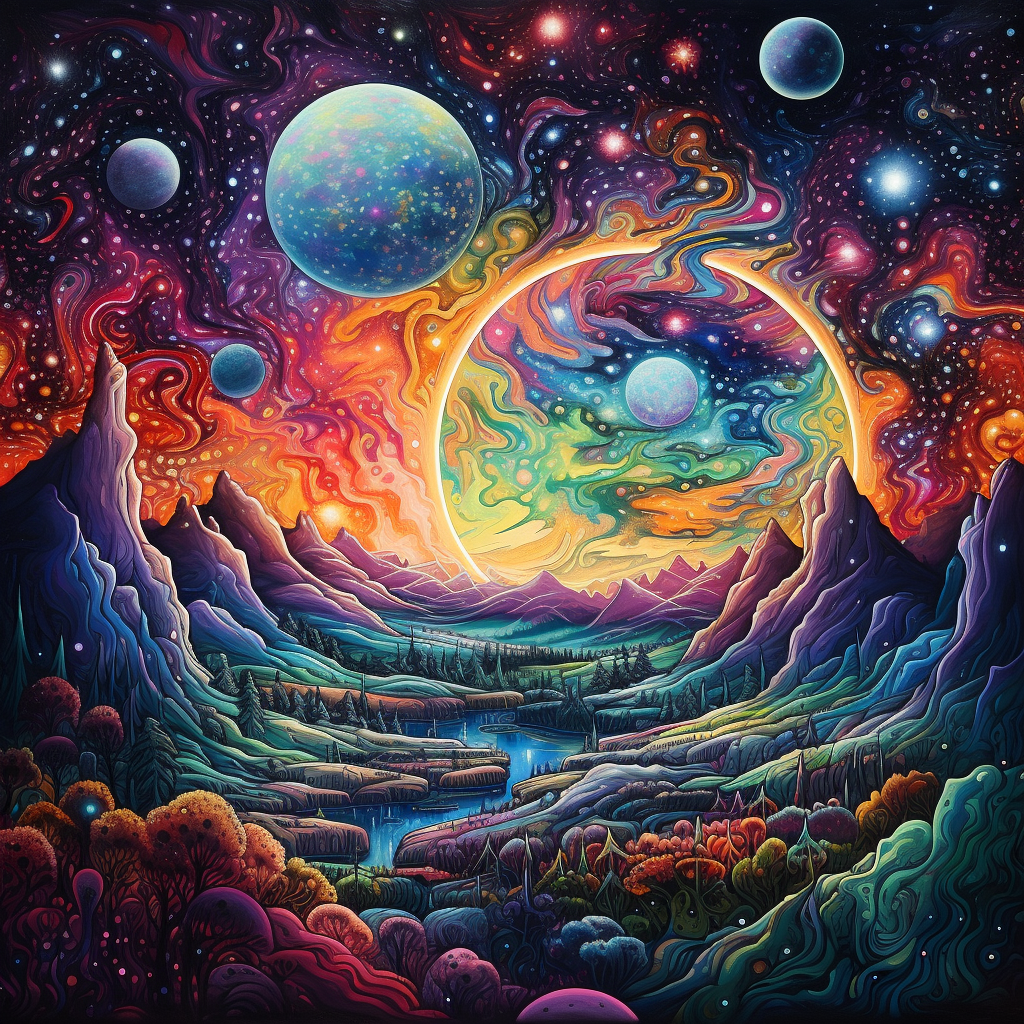

Mystical + Cosmic


Improve


Artistic + Creative


Inner Exploration


Sacred Ceremony +
The Latest Scientific Research
A Look Into Transpersonal, Otherwordly DMT Experiences
In a study published in December 2021, 36 experienced DMT users were observed during their non-clinical use of the psychedelic substance while at home. Each participant received a dose of 40 - 75 mg inhaled (what is considered a high enough dose to induce a "breakthrough" experience.
94% of participants reported encounters with other beings, and could describe the entities' role, appearance, demeanor, communication and interaction.
100% of participants reported emerging into other worlds and could describe the scene, contents and quality of the immersive spaces they experienced.
You can view the research study here, along with detailed accounts of the participants' experiences and similarities between the study's findings and previous studies on DMT.
An Assessment of Human Brain Effects of DMT
In a groundbreaking EEG-fMRI study, researchers sought to unravel the enigmatic workings of DMT within the human brain. By examining the neural changes induced by this powerful psychedelic, they aimed to uncover how DMT influences brain activity and connectivity.
The study found that DMT produced robust dysregulation in the brain's Temporo-Parieto-Occipital Junction (TOP), an area densely populated with serotonin 2A (5-HT2A) receptors—the primary target of psychedelics.
And dysregulation is a good thing in this case!
It means that the brain expands its information processing abilities. It's as if the psychedelic substance temporarily turns up the volume on the brain's information exchange, fostering a hyper-associative style of cognition.
Researchers note that this phenomenon aligns with the reported effects of enhanced creativity, profound insights, and novel thought patterns often associated with DMT.
DMT Research is Still in Early Phase
DMT is currently being investigated in numerous fully funded and legally sanctioned drug development trials. These trials seek to verify its potential for FDA approval as a 'novel' treatment for various mental health conditions, including depression.
This potent substance stands out due to its remarkably swift onset and brief duration, setting it apart from both psilocybin and MDMA. This characteristic makes it particularly appealing to patients and practitioners, as effective treatment may only require a few doses a year.
So far, DMT is considered safe, with low physical toxicity, short duration, minimal dependence or addictiveness, and no evidence of negative long-term physical health effects or lethality.
We will update Go Psychedelic as new research emerges.
Can DMT trigger a bad trip?
There is a potential with any form of DMT to have a bad trip.
A bad trip can include:
- Frightening or disturbing hallucinations
- Being faced with phobias, paranoia or fears
- Confusion or delusions
- Losing touch with reality in a way that disturbs you
Other possible side-effects
- Nausea
- Vomiting
- Dizziness
- Diarrhea
- Increased blood pressure
- Increased heart rate
- Chest pain
- Reduced motor activity
- Increased prolactin and cortisol levels
Contraindications for Use
DMT, like any psychedelic substance, should be approached with caution and awareness of potential contraindications to ensure a safe and positive experience. Here are specific factors to consider before using:
-
Mental Health Conditions: Individuals with a history of severe mental health conditions, such as schizophrenia or psychosis, should avoid DMT use, as it can exacerbate these conditions.
-
Pregnancy and Breastfeeding: DMT's effects on pregnancy and breastfeeding are not well-understood. It's advisable for pregnant or breastfeeding individuals to avoid its use.
-
Personal Readiness: Each individual's readiness for such a potentially intense psychedelic experience varies. It's crucial to evaluate your mental and emotional state and consider whether you are in the right mindset for such an experience.
- Medications & Substances: In particular, the following list of substances are contraindicated for use alongside DMT...
- Other psychedelics or psychoactive substances
- Alcohol
- Amphetamines
- Cocaine
- Antipsychotics
- Benzodiazepines
- Opioids
- Vasodilators
- Blood pressure medications
- Antihistamines
- Muscle relaxants
The Legal Status of DMT
Federal Status in the United States
In the United States, DMT is classified as a Schedule I controlled substance under the Controlled Substances Act (CSA). Schedule I substances are considered to have a high potential for abuse, no currently accepted medical use, and a lack of accepted safety for use under medical supervision.
This classification means that the possession, distribution, manufacture, or use of DMT is prohibited by federal law. Violations of federal drug laws can lead to severe legal consequences, including criminal charges and penalties.
Luckily, legally sanctioned clinical trials for DMT are underway to demonstrate its efficacy for accepted therapeutic and medical use. We suspect that its legal status will evolve over the coming years at local, state and federal levels.
International Legal Status
Beyond the United States, the legal status of DMT varies from one country to another. While DMT is illegal in many countries, there are exceptions where it may be regulated differently. For instance:
-
Brazil: DMT-containing plants, such as ayahuasca, are legal for religious and traditional use in Brazil. However, regulations and legal interpretations can vary within the country.
-
Peru: Ayahuasca is recognized as a traditional medicine and is legally used in certain contexts.
-
Canada: DMT is classified as a Schedule III controlled substance, making its possession, production, and sale illegal. However, there are exceptions for certain religious and research purposes.
-
Netherlands: DMT is classified as a List I substance, making it illegal for both recreational and medicinal use. However, there may be limited research exceptions.
-
United Kingdom: DMT is considered a Class A drug, and its possession, production, and supply are prohibited under the Misuse of Drugs Act 1971.

